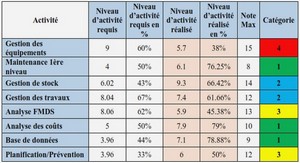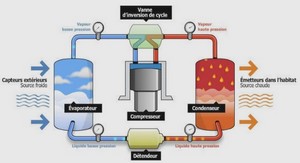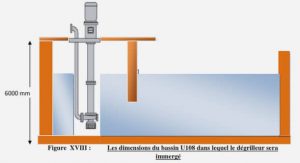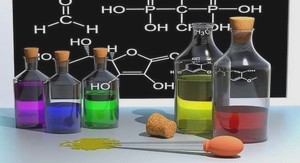Photophysique des molécules polycycliques aromatiques hydrogénées d’intérêt interstellaire
Interstellar polycyclic aromatic hydrocarbons (PAHs)
The PAH model
The presence of PAHs in astrophysical environments was proposed by Léger & Puget (1984) and Allamandola et al. (1985) to account for the so-called unidentified infrared (UIR) bands, a set of emission bands observed in many dusty environments excited by UV photons whose major features are located at 3.3, 6.2, 7.7, 8.6, 11.3 and 12.7 µm. These bands are attributed to the vibrations of aromatic C–H and C–C bonds, for this reason they are also called aromatic Figure 1.4: Diffuse Interstellar Bands (DIBs). (Figure from Draine (2003) based on Jenniskens & Désert (1994)). The values indicate the positions of the DIBs in Å. infrared bands (AIBs). The emission mechanism at the origin of these bands is a stochastic heating process as initially proposed by Andriesse (1978) and Sellgren (1984). The molecules reach high temperatures after the absorption of a single UV photon and then cool down through the emission of IR photons giving rise to the AIBs. PAH emission mechanism The absorption of a UV photon corresponds to an electronic transition between the electronic ground state and an excited electronic state. Fig. 1.5 represents the case of an ion which is relevant for PAH molecules because these species are expected to be at least partly ionised in the astronomical environments where they are observed (Allamandola et al. 1985; D’Hendecourt & Léger 1987; Omont 1986). The electronic states are doublets (D0, D1, D2…) in the case of fully hydrogenated cation species but partially hydrogenated ones (radicals) can have higher multiplicity. This electronic excitation can be followed by a variety of de-excitation processes: – ionisation – photodissociation – electronic radiative transitions, either fluorescence when they take place between states of the same multiplicity or phosphorescence between states of different multiplicity – IR emission (t1/2 ∼ 5 s). In general, the electronic excitation is isoenergetically converted in a very short time (10−12 − 10−8 s) into a highly vibrationally excited level of the electronic ground state (process called internal conversion, IC). Fast (10−12 −10−10 s) internal vibrational redistribution (IVR) leads then to a statistical distribution of the energy between the vibrational modes and the slow IR emission takes place (Léger et al. 1989). Figure 1.5: Schematic energy level diagram for a ionised PAH showing the various radiative and nonradiative channels (from Léger et al. (1989)). 1.2.2 Expected physical state of interstellar PAHs and observational constraints PAHs can be divided into two main classes: pericondensed (compact structure) and catacondensed PAHs (more open structure). The class of pericondensed PAHs contains C atoms that are members of three separate rings (e.g. coronene). If, on the contrary, no C atom in the PAH belongs to more than two rings, the PAH is classified as catacondensed (cf. Fig. 1.6). Figure 1.6: Structures of some representative pericondensed and catacondensed polycyclic aromatic hydrocarbons. (Figure from Salama et al. (1996)). PAHs are estimated to account for a substantial fraction of the total interstellar carbon budget (up to 20% according to Joblin et al. (1992)) and are seen as an intermediate stage between the gas and dust carbon phases of interstellar matter. They are expected to exist in a wide variety of environments, in a complex statistical equilibrium of different charge and hydrogenation states (Joblin et al. 1996b; Bakes et al. 2001a,b; Le Page et al. 2001, 2003). Observational studies on PDRs by Rapacioli et al. (2005) and Berné et al. (2007), in particular, have evidenced that the mid-IR emission in these regions can be accounted for by three different populations, namely neutral PAH0 , cationic PAH+ and VSGs. It was suggested that VSGs are in fact made of PAHs in a condensed form, and that these VSGs are photodestroyed at the surface of UV-irradiated clouds. PAH clusters were investigated as plausible candidates for these VSGs by Rapacioli et al. (2006). The previous observational studies also imply that free PAHs are only present at the surface of clouds, which is consistent with previous studies (Bernard et al. 1992; Boulanger et al. 1990). The spectral decomposition between PAH0 and PAH+ from Rapacioli et al. (2005) was used by Flagey et al. (2006) to analyse the galactic diffuse ISM emission and derive a fraction of 50% of PAH cations in this medium. The ionisation state of these species is governed by the « ionisation parameter », γ = G0 √ T/nH, with G0 the intensity of the UV radiation field in Habing’s units, T the gas temperature and nH the total hydrogen nuclei density (Tielens 2005). PAHs are also expected to contribute to the heating of the gas through photoelectric effect (Verstraete et al. 1990; Bakes & Tielens 1994). The population of PAHs is expected to include derivatives such as dehydrogenated and hydrogenated species and PAHs with substituents at the periphery (see for instance Joblin et al. (1996a); Bernstein et al. (1996)). The composition and structure of PAHs can reflect, in a more complicated way, the history of formation and processing of these species. The size of interstellar PAH molecules is still unclear. Allain et al. (1996) derived a minimum size of about 50 carbon atoms for interstellar PAHs based on the loss of C2H2 whereas Hudgins & Allamandola (1999) have proposed that PAHs with 50-80 carbon atoms dominate the mid-IR emission. Geballe et al. (1994) derived a size of 60 carbon atoms based on the observation of the overtone of the 3.3 µm band observed at 1.68 µm. Studies testing the photo-physical stability of PAHs have pointed to the presence of even larger molecules depending on the surrounding environments (Schutte et al. 1993; Le Page et al. 2003). PAHs are thought to be formed in the outflows of evolved carbonaceous stars, however the detailed mechanisms leading to their formation and growing are not well understood yet. Some studies suggest that the pyrolysis of hydrocarbon molecules can lead to the formation of PAHs in a process analogous to soot formation in combustion processes (Frenklach & Feigelson 1989; Cherchneff et al. 1992). They could also be formed from the fragmentation of C dust particles in shocked regions and from photosputtering in diffuse IS clouds (Scott et al. 1997). Cernicharo et al. (2001) have suggested that photon-driven polymerisation of acetylene could lead to the formation of benzene (C6H6). Other observational studies have also emphasised that PAHs are efficiently produced by UV destruction of VSGs in photo-dissociation regions (Rapacioli et al. 2005; Berné et al. 2007). Concerning destruction, photofragmentation by UV radiation is considered as the main destruction process for PAH molecules (Allain et al. 1996). This process has been proposed in PDRs as a mechanism for the production of small hydrocarbons (Pety et al. 2005).
Towards the identification of interstellar PAHs
The identification of interstellar PAHs relies on the match between their spectroscopic fingerprints and the astronomical spectra. The radio range is commonly used to identify new molecules but, unfortunately, PAHs are usually very symmetrical and present very low (or zero) permanent dipole moments, therefore they do not have a pure rotational spectrum. An exception is corannulene, C20H10, which has a large dipole moment of 2.07 D. This species has recently been searched for using the IRAM 30 m radiotelescope. An upper limit for the fraction of carbon locked in corannulene of about 1.0 × 10−5 , relative to the total abundance of carbon in PAHs, has been obtained by Pilleri et al. (2009). Transitions in the region of the AIBs, near and medium-IR, reflect mainly the vibrations of C–H and C–C chemical bonds so they are common to the whole class of PAHs. The observed spectra in this range likely result from the emission of a mixture of PAH molecules, therefore they are not suited to identify individual species. Spectral features in the far-IR range, on the other hand, are much more specific to the exact molecular identity (Joblin et al. 2002; Mulas et al. 2006; Mattioda et al. 2009). These bands arise at the end of the cooling cascade of the UV-excited molecules and contain the low-frequency vibrational modes associated with collective oscillations of the carbon skeleton. These far-IR bands will be searched for by the recently launched Herschel Space Observatory. It should be also possible to identify PAHs through their electronic transitions in the near-UV to near-IR ranges as carriers of some of the DIBs. Several laboratory measurements have been performed on PAH cations in an attempt to identify among them the DIB carriers (see for instance Salama et al. (1999) and Halasinski et al. (2005)). The search for the identification of individual PAH molecules has not been successful so far. Only Iglesias-Groth et al. (2008) recently claimed a tentative identification of ionised naphthalene, C10H8 +, along one line of sight in the ISM. The number of species that has to be considered is extremely large as the electronic spectrum is quite sensitive to the molecular structure (for instance different degrees of hydrogenation have to be studied for a given carbon skeleton), so it would be impractical to perform laboratory measurements on all of the possible species. Before selecting the most appropri- 1.3 Laboratory approach 31 ate candidates for their study as potential DIB carriers, it is useful to analyse the physical and chemical properties of PAH cations in order to predict which of these species are most likely to survive in the interstellar environments where the DIBs are formed. An important step to accomplish is then to understand the nature of PAHs: where they come from and how they evolve due to environmental conditions (UV irradiation, gas and dust interactions). To provide such information a detailed modelling of the photophysics of these species is mandatory. This modelling requires experimental studies and complementary theoretical studies to get an accurate description of the different processes involved such as the absorption of UV photons, the photofragmentation and the IR emission. These requirements lead to fundamental studies on laboratory analogues of interstellar PAHs and the development of specific laboratory set-ups, such as the PIRENEA experiment, that has been used in this work.
Contents |






